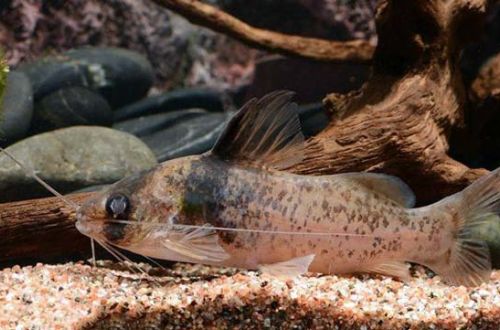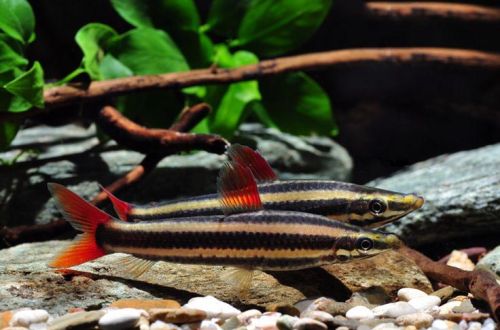
false corridor
Brachyrhamdia imitator or False corridor, scientific name Brachyrhamdia imitator, belongs to the family Heptapteridae (Heptapterid catfish). Inhabits the basin of the Kaura River, one of the tributaries of the Orinoco, flowing through the territory of Venezuela (South America).

Description
Adults reach a length of just over 5 cm. They have a light gray color with yellow tints and a pattern of black strokes on the dorsal fin and head. Tiny dark specks are visible on the body.
The catfish received one of its names due to its resemblance to the Corydoras imitator. Both fish are really similar, especially in coloring, but Brahiramdia has a not so stocky physique, and her antennae are noticeably longer and resemble threads.
Behavior and Compatibility
Peaceful non-aggressive fish. It gets along well with relatives and other species of comparable size (tetras, rasboras, iris, etc.), including Corydoras.
However, due to its food habits, the Brahiramdia imitator poses a threat to fry and small fish up to 2 cm in length. It is noted that other things being equal, Tetras will be eaten.
Brief information:
- The volume of the aquarium – from 70 liters.
- Temperature – 21-25°C
- Value pH — 6.0–7.5
- Water hardness – up to 18 dGH
- Substrate type – any
- Lighting – subdued
- Brackish water – no
- Water movement – low or medium
- The size of the fish is about 5 cm.
- Food – any sinking food
- Temperament – peaceful
- Content – alone or in a group
Maintenance and care, arrangement of the aquarium
The optimal size of the aquarium for a group of 3-4 catfish starts from 70-80 liters. The false corridor is a bottom dweller, so the main attention in the design is given to the lower tier. Free areas are recommended to alternate with places for shelters in the form of snags, heaps of stones and / or other natural or artificial decor. Plants floating on the surface will be a good means of shading – Brahiramdia mimic does not like too bright light.
Successfully adapts to various conditions, the catfish is able to live in a relatively wide range of hydrochemical parameters, which simplifies the maintenance process in terms of water treatment.
Food
An omnivorous species, in relation to which it is quite possible to apply the epithet – voracious. You shouldn’t overfeed. It is recommended to serve popular sinking foods with a high content of protein components. On occasion, it will eat juveniles of other fish.





